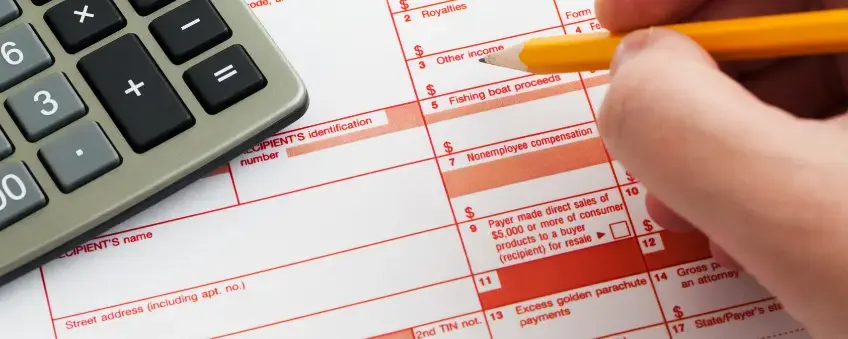As a restaurant owner or operator, your staff is the backbone of your business. Ensuring you have enough servers, cooks, and ancillary staff is essential for running your restaurant smoothly. Incorrectly staffing your business can lead to slow service, unhappy customers, and damage your establishment's reputation. That's why restaurant employee scheduling is so essential to the success of eateries of all sizes.
However, designing an employee restaurant schedule is more challenging than it sounds. You must juggle your restaurant's requirements, staff preferences, and other factors. This guide offers a step-by-step guide for developing a reliable restaurant schedule and some tips and tricks to help you improve your schedule-making processes. Read ahead if you need a resource for designing a restaurant employee schedule that keeps customers, staff, and management happy!
How to Design Employee Restaurant Scheduling
Designing an employee restaurant schedule is challenging, but creating a core process can help avoid disappointment. Let's explore a step-by-step guide for making one:
1) Establish a routine for making the restaurant schedule
First, it's critical to have an established routine for designing your employee restaurant schedule. Not only will this make it easier to create your schedule, but it will also ensure consistency. Likewise, there's nothing more stressful for staff than having a manager who doesn't release the schedule on time.
Set a specific frequency for releasing the schedule. Do you plan to release a monthly, weekly, or bi-weekly schedule? While releasing a monthly schedule means you'll only need to focus on designing the schedule once per month, it also means you and your staff need to plan further in advance. Likewise, it may result in many shift swaps, leading to confusion.
Choose a specific day in each scheduling cycle to create the schedule. Set aside time to develop the schedule for release on a pre-defined deadline.
2) Make an availability chart
Creating a central document where staff can communicate their availability is critical. Asking staff to email or text you about availability will lead to significant headaches. Instead, an "availability chart" makes it simple for employees to post their availability in a single location. Additionally, it acts as a visual aid, making it much easier to design your schedule.
While availability charts were traditionally large paper calendars, various staff management software platforms are now available to streamline the process.
However, being too flexible with an availability chart can lead to huge gaps in your schedule. It's best to have pre-defined requirements, such as the number of weekly shifts that staff must be available. This leads us to step three below!
3) Create policies for staff time-off requests
While it's critical to be flexible for your employees, you must ensure clear policies for staff time-off requests. This makes it much simpler to manage expectations and avoid disappointment. The policies for your restaurant will vary depending on staffing levels, busy days, and other factors. However, here are some examples of policies that may be suitable for your eatery:
- Staff must request vacations of 3+ days at least four weeks in advance
- It's a requirement for staff to communicate time-off requests via the official employee management portal
- Staff must be available for at least five days per week
- Staff receive time off for either Christmas or Thanksgiving (not both)
4) Evaluate and prioritize employee strengths and top generators
All of your employees are different, so it's critical to understand their strengths and weaknesses before you make a schedule. For example, you may have some employees who thrive under pressure. Placing them in multiple busy shifts per week won't worry them, and they'll welcome the opportunity to earn more tips and help the business. However, other employees may find the busy periods more stressful. While they can handle one or two busy shifts per week, they perform better at quieter periods, and they're happy earning fewer tips in exchange for being less stressed.
Likewise, rewarding your staff members who work hard for you is critical. Top generators are hard to come by, and their needs shouldn't be overlooked. If you have an employee who's a customer favorite and never misses a day of work, ensure they know they're valued when you make your schedule.
5) Set up a mix of shifts for day, night, and high-dollar times
Next, it's time to ensure a healthy mix of different shifts for your employees. Whether it's waitstaff, table cleaners, food runners, cooks, or anyone else working in your restaurant, it's essential to spread the work burden across the entire team, not just a few individuals. This means providing a sustainable mix of shifts and making sure that your staff can maintain a good work-life balance. For example, making someone work night shifts exclusively may make them unable to socialize with friends. Mixing day and night shifts ensures a good balance for your employees.
As a restaurant owner, you know there are times during the week that generate much more money than others. Your waitstaff likely covets these busy periods as they generate significant tip revenue. Again, this is where prioritizing your top generators is essential. You must ensure your best staff members are rewarded with lucrative shifts. Still, it's critical to give some exposure to high-dollar times to all staff members who desire it. This is one of the most challenging elements of a schedule — you should tread a fine line to make sure everyone is happy and well-rewarded.
6) Avoid back-to-back shifts
A back-to-back shift is when you schedule an employee to work the close shift one night, and the opening shift the following day. If you're stuck finding someone to cover a shift, it can be tempting to schedule an employee in a back-to-back timeslot. However, this should be avoided as much as possible.
Making staff work two shifts in 24 hours can harm the individual's rest and morale. Likewise, it may lead to poor performance, resulting in lower service standards within your restaurant.
7) Provide off days with two days in a row, ideally
Your restaurant's staff members deserve rest. Not only is it fair to allow your staff members some time for relaxation and recuperation, but there's also significant evidence days off can result in increased productivity. However, many restaurant owners habitually provide their employees with days off scattered throughout the week. This format doesn't allow staff to plan short trips or enjoy extended time away from work. Restaurant employees often work night shifts, weekend shifts, and other inconvenient times, meaning they can't take advantage of conventional weekends, so reward them with two days off when possible.
8) Accommodate for shift swaps
No one enjoys a manager who restricts staff from swapping shifts. If you want to keep your employees happy, you need to provide a mechanism for them to switch shifts if their plans change. If you use staff management software, swapping shifts can be automated. If not, ensure you receive a written request to swap shifts and implement it on the schedule. Otherwise, it may be confusing if someone doesn't appear for a change.
This isn't to say you shouldn't monitor or restrict shift swaps. If a particular employee continues to drop all their shifts or only swap shifts with one other member of your staff, it's worth highlighting. You don't want employees growing resentful that they're losing out on shifts to someone who rarely fulfills their schedule.
9) Populate and publish the schedule
Once you have finished designing your schedule, it's time to release it to your employees. If you still use a paper schedule, print it and display it in an area where your employees will see it. It's critical to post it in the same spot in the future so staff members know exactly where to find it. Likewise, you should email or text the digital version of the schedule to employees to ensure everyone has immediate access to it.
Using staff management software, you can publish the schedule within your system. Each software has different publishing processes.
10) Make it easy for staff to access
As discussed, staff must have immediate and convenient access to the schedule. There should be no reason why employees can't access it. This means constantly emailing or texting the schedule to staff so they don't need to be on-premises to access it. Staff management software makes this simple, as staff can log into their employee account and view the schedule.
11) Give your employees plenty of lead time to review
No one enjoys short notice when it comes to restaurant employee schedules. Providing ample time for your staff to review the schedule is a top priority. Not only does this make it easy to spot mistakes, but it also allows your staff to request shift swaps and other adjustments without causing significant headaches. Establish how far in advance you will release your restaurant's employee schedule and stick to your deadline.
Restaurant Staff Scheduling Tips
Following the steps outlined in this guide is a good foundation for building a restaurant staff schedule that works for your business. However, you can use other tips and tricks to improve your restaurant schedule and the processes you use to develop it. Let's check them out:
Create a restaurant schedule template for consistency
If you want your staff to be able to read your schedule easily, it's critical to stick to a restaurant schedule template. Whether manually creating a template in Microsoft Excel or using a staff management platform to create your employee schedule, it's important to stick to a pre-defined template. Use the same outline, colors, and format to ensure staff can look at and understand the schedule instantly. Your employees should never have to struggle to know when they're working. Also, once you have a restaurant schedule template in place, it will reduce the time it takes to create new schedules.
Prioritize work-life balance
With 66% of employees in the United States claiming they lack work-life balance, prioritizing your staff's lifestyle can help differentiate your restaurant from your competition. Working in hospitality is challenging — contending with a fast-paced environment, rude customers, and other issues can result in high stress. Ensure you give staff members enough time to enjoy out-of-work activities and spend time with their families. Not doing so may lead to poor retention rates and scheduling headaches.
Embrace scheduling flexibility
Research suggests employees believe work flexibility is the most critical skill for leadership. So, while allowing for shift swaps and scheduling flexibility can seem like a hassle, it's essential. No one wants to work for a boss who won't let people cover their shifts. Embrace being a flexible manager—as long as you have robust policies to ensure all shifts are covered, your team's morale boost is worth it!
Plan for holidays
Holiday periods can be particularly challenging for the restaurant employee scheduling process. Whether it's Thanksgiving, Christmas, July 4th, or any other time people spend time with family, it's essential to plan. Asking for holiday time-off requests weeks or months in advance can help avoid disappointment and confusion. It's also a good idea to have holiday policies outlined in advance. For example, if your restaurant remains open over major holidays, you may have a policy where staff can request either Christmas or Thanksgiving off (but not both).
If your staff members have children, it's also important to consider the summer holidays. You may receive an increase in holiday requests during the school break. Planning for this will ensure your employees have time to take their kids on vacation without impacting your restaurant's operations.
Maintain open and transparent communication
One of the biggest downfalls in the restaurant scheduling process is a lack of communication. You will create scheduling issues if you fail to communicate with staff about your expectations, policies, and processes. Make sure employees know you're approachable. Otherwise, they may avoid bringing up pressing issues that will result in headaches for your restaurant's management team. Also, make sure staff know the best way to contact you. For example, ensure your employees know whether you prefer text over email.
Invest in staff development
With 74% of employees suggesting they aren't reaching their full potential due to limited staff development opportunities, it's more essential than ever to help your team grow. Employees are the backbone of your restaurant. Your restaurant's operations and reputation will suffer without the correct team. If you want your employees to perform at the highest level and trust you're a capable leader, frequent staff development opportunities must be available:
- First Aid Courses: Your staff must be trained to address customer and employee health issues. First aid courses are a must-do for your entire team.
- Communication Courses: Communicating with customers and other employees is essential. Communication courses are an excellent form of professional development for individuals working in the restaurant industry.
- Wine Tasting Courses: Do you serve wine at your restaurant? If so, having servers with wine-tasting experience can help improve customer satisfaction. It's always beneficial if your waitstaff can recommend wine and provide tasting notes.
- Cooking Courses: Your restaurant's junior cooking staff would likely relish the opportunity to improve their cooking skills through various courses. This is a great way to reward and encourage your kitchen staff.
The above development opportunities help improve your staff's skills and ensure employees are well-equipped for a future in the food service industry.
Review data and regularly re-evaluate
Staying on top of staffing issues is critical for a restaurant manager or owner. This means periodically reviewing staff data, such as how often employees work, staff shortages occur, and with whom employees swap shifts. If you use staff management software, analyzing this data is much easier, as all changes, swaps, and no-shows will be tracked automatically.
However, restaurant scheduling data alone does not indicate whether scheduling staff is working—you must also talk to your staff. Routine staff feedback is an excellent way to gauge sentiment and spot issues with the scheduling process before they cause widespread discontent.
Leverage Technology to Streamline Scheduling
While many restaurants still rely on paper schedules and availability charts to manage staff shifts, it can be time-consuming and confusing. Fortunately, staff management software is now available to help businesses collect availability, design schedules, manage staff swaps, and more. Likewise, scheduling software makes distributing and analyzing your restaurant schedules easier.
Many payment processors and point-of-sale (POS) providers also have in-house scheduling and staff management software, making it simple to access your payment and staff management platforms in a single location. So, what are you waiting for? If you want to benefit from quicker schedule development, better staff management, and easier access to scheduling data, it's time to leverage technology!






